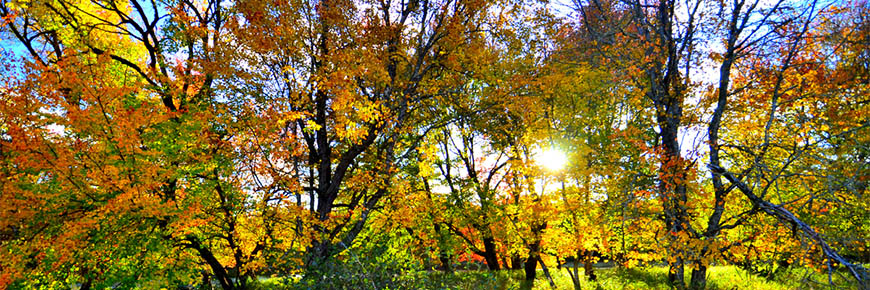
Wilderness hiking
Kejimkujik National Park and National Historic Site
With over 100 km of trails, Kejimkujik provides numerous opportunities to explore forests, lakes, and rivers. For the hiker who takes to the backcountry, true solitude prevails. Away from the canoe routes, more bobcats walk our trails than hikers. You will pass through every imaginable type of forest (we count 21 different types), wade through hip-high ferns, cross small brooks and skirt some lakes.
Each season has its allure, but autumn is best. Trails are dry, days are cool and invigorating without the extreme heat or bugs.
Hiking Routes
Reservations and Registration
Safety
Shuttle Service
Resources
Hiking Routes
Liberty Lake (60.5 km)
Big Dam Lake Parking Lot - Campsite 45 11.5 km
Campsite 45 - Campsite 42 14 km
Campsite 42 - Campsite W1 18.5 km
Campsite W1 - Campsite 28 12 km
Campsite 28 - Lower Mersey River (Eel Weir) 7 km
This trail, Kejimkujik’s longest hiking route, encircles the park and stretches from the Big Dam Lake parking lot along the western boundary to the lower Mersey River bridge downstream from George Lake at the Eel Weir. Although four days (three nights) is ample to complete the route, experienced hikers find that five days allow them to enjoy the natural environment to its fullest. This is a wild-country hiking trail, with rough footing and varying from a 3-metre-wide woods road to a narrow path. In some places, it is wet and boggy with streams running through it; other areas are dry and rocky. Near Big Dam Lake, take a side trip on the “Hemlocks and Hardwoods” loop through a magnificent stand of ancient hemlocks, where the soft moss undergrowth creates an impression of timeless silence. Near the head of Frozen Ocean Lake is campsite 45, set in a stately stand of white pines, allowing you to enjoy the warmth of the morning sun over the lake. Watch the trail markers closely, especially as you approach and cross the headwaters of the West River, where open grass, meadow and alder thickets make the trail less obvious. Lucifee Brook derives its name from the French “Loup cervier” (lynx). Although lynx are no longer found here, you could see bobcat droppings along the trail. You may also see evidence of coyote and black bear activity, but few hikers ever actually meet a bear. Several other trails, described below, branch off the Liberty Lake trail, offering more places to explore and camp.
Side Trips
Liberty Lake Trail - Campsite 22; 12.5 km Return (along West River)
Fire Tower Road 15 km Return
Channel Lake (24 km)
Big Dam Lake parking lot - Campsite 17: 5 km
Campsite 17 - Campsite 5: 10.5 km
Campsite 5 - Big Dam Lake parking lot: 11 km
This overnight loop trail begins and ends at the Big Dam Lake parking lot. The trail from Big Dam to Channel Lake is dry and rocky. The section from Campsite 17 to Campsite 5 goes inland to avoid the bog around the lake. Just before Campsite 5, you must wade across Still Brook (about two metres wide). During spring flood and other high water conditions, the brook is impassable. Before starting this trip, ask Kejimkujik staff about the water levels. On the northeast side of Still Brook is a beautiful hemlock stand. Beginning here, you follow a high, level ridge called an esker—a gravel ridge deposited as the bed of a river which ran inside an ancient melting glacier. When the glacier melted away, the gravel bed remained on the underlying land as a raised ridge about 10 metres high. In this area, they are also known as “Gold Ridges” since small traces of gold were sometimes found in the gravel. At the head of Frozen Ocean Lake, join the Liberty Lake Trail and follow it back around Big Dam Lake to the parking lot where your hike began.
Big Dam/Frozen Ocean (23 km Return)
Note: This route consists of the first 11.5 km of the Liberty Lake Trail. You must return on the same trail. This is a good overnight trip, with 4 campsites (1, 3, 45, and 46) en route. The trail, about one metre in width, has dry, rocky, wet and marshy terrain. See the description of the Liberty Lake and Channel Lake Trails for highlights.
Reservations and Registration
You must register for backcountry camping at the Visitor Centre and return your permit at the end of your trip. Reservations are recommended.
Safety
Trails are marked with brightly coloured markers.
Footwear suitable for hiking, and the ability to read a map, use a compass, and carry a heavy pack for long distances are required.
In spring, when brooks are full and wetland sections of the trails are flooded, hikers will get wet feet—probably every day. In late summer and early fall, hiking conditions are excellent.
When travelling with dogs be sure to keep them leashed to avoid confrontations with wildlife.
Resources
The Kejimkujik Backcountry Guide available by calling the Park’s Visitor Centre, or at Jakes Landing Outfitter, and Mountain Equipment Co-op and The Trail Shop, both in Halifax.
Keji-A Guide to Kejimkujik National Park and National Historic Site, available at By The Mersey Gift Shop in the Park’s Visitor Centre, and at selected bookshops.
Related links
- Date modified :